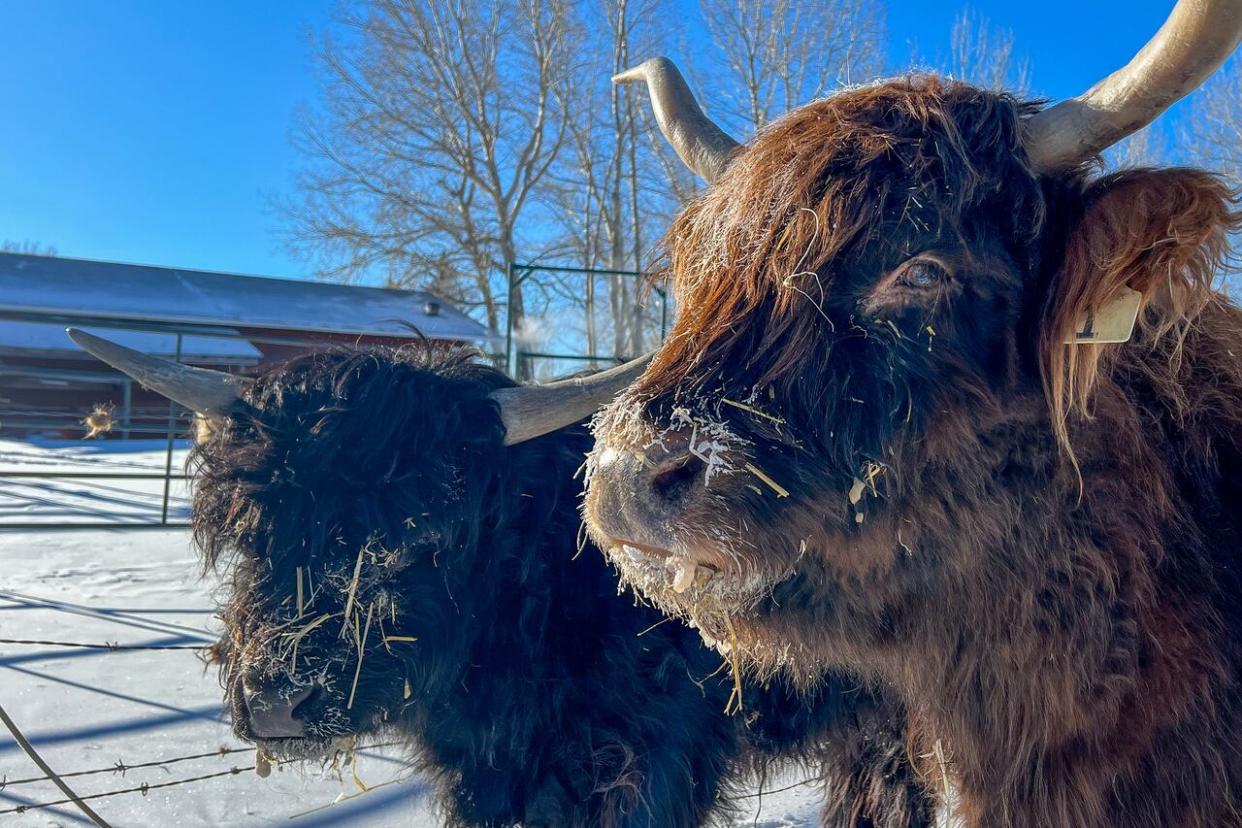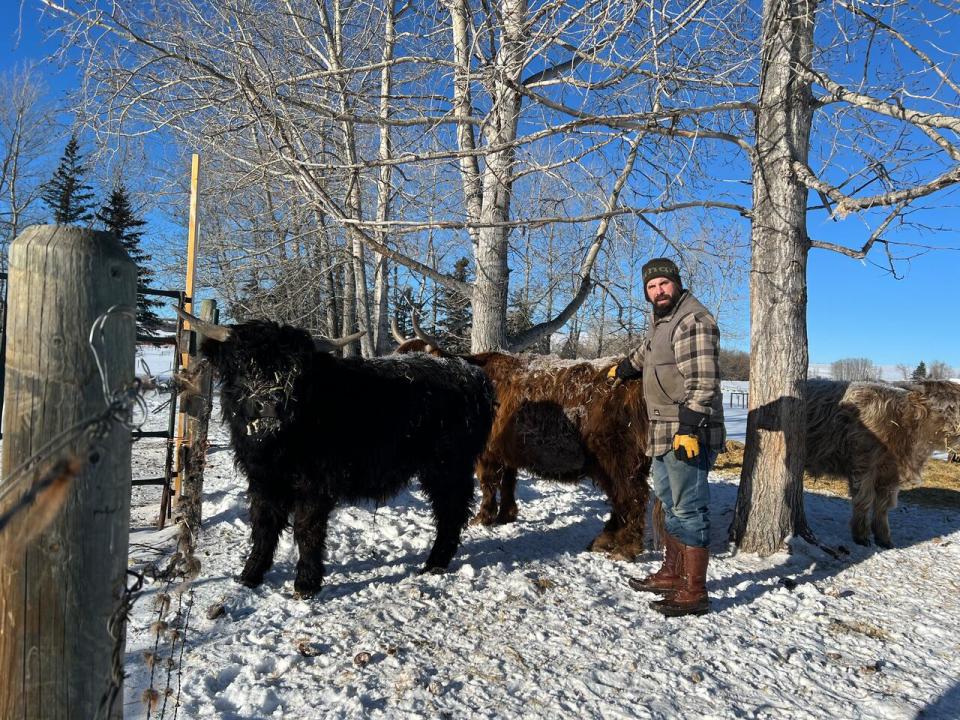Don't wait till these cows come home, they love the cold

- Oops!Something went wrong.Please try again later.
While people might be hunkering down somewhere warm right now, as the temperature hovers around –30 C, Nick Shipley's cattle are in no rush to get indoors.
Shipley is the co-owner of Hartell Homestead. He raises long-haired Highland cattle on his ranch just off Highway 22, about halfway between Diamond Valley and Longview, Alta.
He says the animals' thick coat not only means they produce an extremely lean beef, but it also means they don't feel the cold like some other four- (and two-) legged creatures do.
"You can see all this lovely hair that makes them adorably cute, also keeps them warm," Shipley said.
After Shipley gave the herd an extra-large feed of hay on Saturday morning, the cattle scratched up against some fence posts for a while before heading off for a nap in the sun.
"You can see Bojangles here, he's sitting chewing his cud, happy as a clam," Shipley said.
"When you look at their backs you can see all that frost there, you think, oh my god they must be freezing, but that actually means they're warm."
One of the keys to keeping them warm in the frigid conditions Alberta has been experiencing this week is giving them plenty of food. Shipley says his animals will eat about double their normal amount of feed during the cold snap.
Dr. Jodi Viste is a veterinarian and the medical director of the Animal Care Centre of Strathmore, which is a mixed animal practice that sees everything from cattle, horses, goats and sheep, to dogs and cats.
She says different breeds of cattle are more prone to experiencing problems in frigid weather than others. Shorter-haired, more tropical breeds can be more susceptible in this kind of weather to hypothermia and frostbite. But generally, cattle producers in Alberta have livestock that can handle these conditions.
"Most producers are well prepared for this weather," Viste said.

Nick Shipley of Hartell Homestead says, during the cold weather, he’s outside more than ever, checking on the herd, making sure they look healthy and have enough bedding and water. (Helen Pike/CBC)
According to the veterinarian, there are a few things producers need to do when the temperature drops as low as it is now.
"The critical things are increasing the amount of feed because they will burn through more calories, make sure that they're sheltered, make sure they have extra bedding, and the key thing that you see a lot of farmers out there doing right now is making sure that there's a water source. So you'll see them drilling through ice, you'll see them coming up with lots of different ideas to get water to those animals, whether they have to bring the water to the herd, or move the herd to an area where they can have water," she said.
Viste says people generally don't appreciate how much effort goes into taking care of these animals, particularly during cold Alberta winters.
"A cattle producer will go out multiple times a day, this time of year, to feed them. It doesn't matter whether it's blizzarding or not, they're out there, looking after these guys. So, the care and the love that producers have for their livestock is exceptional," she said.
Nick Shipley agrees with that. He says, during the cold weather, he's outside more than ever, checking on the herd, making sure they look healthy and have enough bedding and water.
"There's guaranteed a lot of farmers with axes chopping water open right now," Shipley said.

